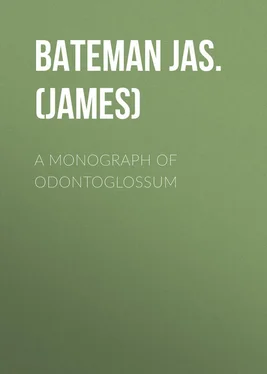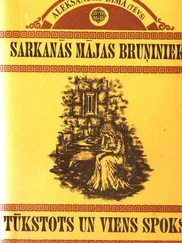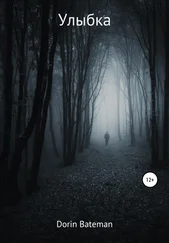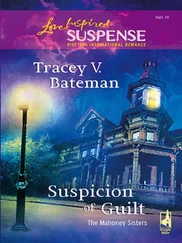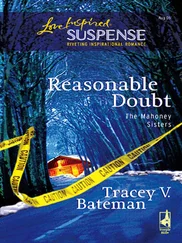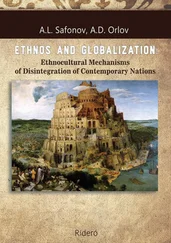Jas. (James) Bateman - A Monograph of Odontoglossum
Здесь есть возможность читать онлайн «Jas. (James) Bateman - A Monograph of Odontoglossum» — ознакомительный отрывок электронной книги совершенно бесплатно, а после прочтения отрывка купить полную версию. В некоторых случаях можно слушать аудио, скачать через торрент в формате fb2 и присутствует краткое содержание. Жанр: foreign_antique, foreign_prose, на английском языке. Описание произведения, (предисловие) а так же отзывы посетителей доступны на портале библиотеки ЛибКат.
- Название:A Monograph of Odontoglossum
- Автор:
- Жанр:
- Год:неизвестен
- ISBN:нет данных
- Рейтинг книги:5 / 5. Голосов: 1
-
Избранное:Добавить в избранное
- Отзывы:
-
Ваша оценка:
- 100
- 1
- 2
- 3
- 4
- 5
A Monograph of Odontoglossum: краткое содержание, описание и аннотация
Предлагаем к чтению аннотацию, описание, краткое содержание или предисловие (зависит от того, что написал сам автор книги «A Monograph of Odontoglossum»). Если вы не нашли необходимую информацию о книге — напишите в комментариях, мы постараемся отыскать её.
A Monograph of Odontoglossum — читать онлайн ознакомительный отрывок
Ниже представлен текст книги, разбитый по страницам. Система сохранения места последней прочитанной страницы, позволяет с удобством читать онлайн бесплатно книгу «A Monograph of Odontoglossum», без необходимости каждый раз заново искать на чём Вы остановились. Поставьте закладку, и сможете в любой момент перейти на страницу, на которой закончили чтение.
Интервал:
Закладка:
As to the botanical limits of the genus, I must needs confess that they are exceedingly difficult to fix. It is as true now as when Professor Lindley first made the observation to me, that "The more we build up the partition walls between Odontoglossum , Oncidium , &c., the more the species break them down." Certainly no one at first sight would suppose Odontoglossum cariniferum was anything but an Oncidium , nor Oncidium macranthum other than an Odontoglossum . Indeed, I must own to a suspicion that ultimately both these genera, together with Miltonia , Mesospinidium , Aspasia , and possibly one or two others, may come to be regarded merely as sub -genera, But this difficult question is safest left in Professor Reichenbach's far abler hands. At the same time, it is not to be denied that there is such a peculiar look about the Odontoglossa , that even a non-scientific observer has seldom any difficulty in at once referring most of the species to their true position.
One other matter remains to which I must very briefly advert. Mr. Darwin's fascinating work on the "Fertilization" of Orchids has led many persons to suppose that this beautiful tribe lends an exceptional amount of support to the theory with which that ingenious writer's name is so prominently associated, but there could scarcely be a greater mistake. Not only is the theory in question utterly rejected by Professor Reichenbach, the facile princeps of living orchidists, but the greater our knowledge of the order, the less countenance does it seem to yield to the Darwinian view. We have now become perfectly well acquainted with all the genera – we might almost say with all the species – that belong to particular countries, but it is in these that the limits of variation between the different forms are most distinctly defined; in these, too, the great principle of unity in diversity is most conspicuous – the genera holding aloof from each other, and even the species keeping themselves distinct, although the Orchid mark is unmistakeably stamped upon all alike. Mr. Gould has remarked, in his great work on the " Trochilidæ ," that the Darwinian theory derives no support from them , and the same may be safely affirmed of Orchids, which – we are now speaking of America – are the humming-birds' constant associates. Neither, while we contemplate the marvellous and inexhaustible variety of form by which the order is distinguished above all its fellows, can any plead that this result is due to its ancient lineage, nor yet to the vast periods through which endless transformations are assumed to have been continually taking place, because Orchids – according to geologic reckoning – are but a thing of yesterday, and have never been found in a fossil state. Yet their constant companions the Ferns, trace back their pedigree to the earliest vegetation of the primeval world! To the believer, however, the problem is not hard to solve. Ferns and other flowerless plants came early in the Divine programme, because the coal, into which they were to be ultimately converted, had need to be long accumulating for the future comfort and civilization of our race; while the genesis of Orchids was postponed until the time drew near when Man, who was to be soothed by the gentle influence of their beauty, or charmed by the marvellous variety of their structure, was about to appear upon the scene. There are multitudes who could bear witness how amply, in their own experience, this gracious purpose has been fulfilled; while the writer – in whose breast a love of Orchids prevailed from his youth up – can only exclaim with the Psalmist, "Thou, Oh Lord, hast made me glad through Thy works, and I will rejoice in giving thanks for the operation of Thy hand."
J. B.Knypersley Hall, April 24th, 1874 .
Plate I.
ODONTOGLOSSUM NEBULOSUM, Lindley
O. (Leucoglossum, Lindl. ) pseudobulbis ovatis compressis 2-3-phyllis, foliis oblongis acutis basi conduplicatis pedunculo radicali erecto (apice) nutante 3-7-floro brevioribus, bracteis scariosis amplexicaulibus ovario duplo brevioribus, sepalis petalisque latioribus membranaceis oblongis undulatis apiculis recurvis, labelli ungue cucullato carnoso, lamellis duabus erectis dentibusque totidem anticis, limbo ovato acuto dentato subpubescente, columnâ apterâ elongatâ. ( Lindl. quibusdam mutatis .)
Odontoglossum nebulosum, Lindl. Fol. Orch.
Odontoglossum maxillare, Lemaire (nec Lindley), Illustration Horticole (1859), t. 200.
Habitat in Mexico, prope Oaxaca ( Karwinski , Galeotti , etc.), circiter 5000 ft.
Pseudobulbs 2 to 3 inches long, smooth, ovate, somewhat compressed, 2- or 3-leaved . Leaves 2 or 3 at the apex of the pseudobulbs, oblong, acute, shorter than the Scape, which, rising from the base of the pseudobulbs, is bent down at its upper extremity by the weight of from 3 to 7 large and handsome Flowers. Bracts only half the length of the ovary, embracing the flower-stem . Sepals 1½ inches long . Petals much wider than the sepals, and like them of an oblong form, waved at the margin, and a little recurved at the end, which is sharply pointed; both sepals and petals are of clear membranous white, clouded (as the name implies) by a profusion of spots or blotches of a reddish-brown colour, which extend to nearly half their length . Lip of the same texture and colour as the sepals, only that the brown blotches are broader, and that there is a patch of yellow on the claw; its upper portion is of an ovate form, acute, with the margins very much torn; its fleshy dish is hooded, or gathered into 2 erect plates, with a pair of teeth attached in front . Column very long, destitute of wings .
It was at Munich, in the year 1835, that I first became acquainted with this fine Odontoglossum having, through the kindness of Professor Von Martius, been allowed to examine the rich collection of dried specimens that Baron Karwinski had then recently brought home with him from Mexico. Two years afterwards living plants were sent to me from Oaxaca, which happening to arrive in the midst of that remarkably severe winter 1837-38, I naturally expected would have been destroyed on their way; so far, however, from this being the case, they appeared to have sustained little or no injury from the cold, and on being placed in a stove they soon began to push both roots and leaves. All went well so long as the temperature of the house did not exceed 70°, but when the winter had passed away and they had to face the intense heat at which the Orchid-houses of that period were ordinarily maintained, they then quickly lost their vigour and before a twelvemonth had passed were all gone, victims – like a multitude of other invaluable plants – to our then ignorance of the conditions under which alone the Orchids of cool countries could be expected to thrive!
I am not aware that this plant ever flowered in this country until within the last year or two, certainly no figure of it has ever been published in any English botanical periodical; I have, however, found in a French work (the Illustration Horticole ), under the name of O. maxillare , what is obviously the same as the plant represented in the Plate. I should myself have probably fallen into the same mistake as Professor Lemaire, had I not enjoyed the opportunity – which he unfortunately had not – of examining the original specimens in Dr. Lindley's herbarium, and from which that able botanist drew up his description (in the Folia Orchidacea ) of the two species. O. maxillare , of which Dr. Lindley only examined a single flower – though he made a most careful drawing – is shown by a glance at the latter, to be a totally different thing; it has moreover, I fear, long since disappeared from our collections. In Dr. Lindley's description the flower-scape is said to be terminal, which in nature it never is, although from the way in which Karwinski's wild specimen was glued together, it certainly presents that appearance in the herbarium. The column moreover, and the base of the sepals and petals, are said to be pubescent, though nothing of the kind is visible to the naked eye when the flowers are fresh. With a powerful magnifying glass pubescence may certainly be seen.
Читать дальшеИнтервал:
Закладка:
Похожие книги на «A Monograph of Odontoglossum»
Представляем Вашему вниманию похожие книги на «A Monograph of Odontoglossum» списком для выбора. Мы отобрали схожую по названию и смыслу литературу в надежде предоставить читателям больше вариантов отыскать новые, интересные, ещё непрочитанные произведения.
Обсуждение, отзывы о книге «A Monograph of Odontoglossum» и просто собственные мнения читателей. Оставьте ваши комментарии, напишите, что Вы думаете о произведении, его смысле или главных героях. Укажите что конкретно понравилось, а что нет, и почему Вы так считаете.
